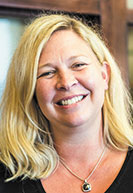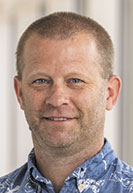Subscriber Benefit
As a subscriber you can listen to articles at work, in the car, or while you work out. Subscribe NowLocal leaders are hopeful a four-day trip to Singapore late last year will provide a much-needed jump-start for development along the White River.
A 26-person contingent comprising state and city officials, not-for-profit leaders and business executives traveled to the tiny city-state Nov. 14-17 to study how the nation has developed land along its waterfront.
Led by Visit Indy, the trip focused on understanding Singapore’s economic development and tourism strategies, including whether Indiana can make similar investments along the White River to benefit residents and visitors.
The trip’s heavily structured days were immersed in Singaporean culture, full of meetings with public officials and behind-the-scenes looks at tourist attractions and government operations.
Among those who made the trip was Jake Oakman, executive director of White River State Park downtown, which is planning an expansion as part of a larger strategy for the former General Motors stamping plant site across Washington Street from the park, west of the river.
Elanco Animal Health Inc. is expected to occupy at least 30 acres of the site with its $150 million global headquarters, set to open next year. A 10- to 15-acre strip along the riverbank has been set aside to expand White River State Park, which currently has 250 acres, spans the river and is home to the Indianapolis Zoo, NCAA headquarters and Hall of Champions, the Eiteljorg Museum of American Indians and Western Art, the Indiana State Museum, Everwise Amphitheater and Victory Field.
Oakman and others with the state spent a large portion of the Singapore trip concentrating on how the government there has developed the 275-square-mile country’s southern coast along the Singapore Strait, a waterway that separates Singapore from several Indonesian islands.

Singapore in 2012 opened a six-year, $1 billion project known as Gardens by the Bay. The 250-acre nature park that fronts 3.2 miles of coastline is now the country’s top tourist attraction, drawing more than 87 million visitors to date, including nearly 8.8 million in 2022.
The site is described as “a showpiece of horticulture and garden artistry,” featuring 18 towering “vertical garden” steel sculptures known as Supertrees, lush and spacious greenhouses and conservatories, continually changing floral displays and an aerial walkway.
Singapore developed Gardens by the Bay as part of its focus on improving cultural infrastructure for its almost 6 million residents and for visitors from around the world.
Oakman said there are no plans to replicate Gardens by the Bay locally, but city and state leaders hope to draw inspiration from the trip, including how to be thoughtful about what’s done with White River State Park’s expansion on the stamping plant site.
“There’s an intentionality [of design and focus] in Singapore that, despite the political differences and the climate differences … is something that can be directly translated over here,” he said. “So, how do we once again embrace this river we have running through our city?”
In November, before the trip, the Indiana Economic Development Corp. received an initial assessment of White River State Park from Indianapolis-based firms Rundell Ernstberger & Associates and David Rubin Land Collective.
It found that a $13 million investment would allow the state to create numerous amenities in the park expansion, including a 4,800-square-foot amphitheater, a plaza, a promenade trail featuring pedestrian and bicycle paths, an urban beach, a nature area and a launch for small, recreational watercraft. The state also is interested in access points for kayaks, but that was not included in the proposal.
Those plans may not be finalized and made public until later this year, and no funding source has been identified.
A unique opportunity
The IEDC is taking some lessons to heart for its development plans at the stamping plant site beyond the park expansion.
The quasi-governmental agency’s current plan calls for a mix of housing near The Valley neighborhood that abuts the stamping plant site, along with space for suppliers and other companies in fields related to animal health.
And while that concept generally remains intact, IEDC Chief of Staff Vincent Ash said the Singapore trip has influenced how the state might move forward.
“I think we left there saying, ‘Hey, we can actually do something with this,’” Ash said. “It’s not going to be at the scale of Gardens by the Bay by any means. … But I think it left a lot of people appreciating that we didn’t just put a Ferris wheel up in [White River State Park], and that we’re being really thoughtful about how we determine what our assets are and what amenities are really needed for us to compete and to really be a destination.”
He said Indiana can learn a lot from the high value Singapore places on its waterways, treating them as an extension of residents’ and visitors’ experiences in the country, rather than as boundaries.
The Singapore government has more control over the destiny of its waterfront than do most governmental entities in Indiana, though, because land along major waterways in Singapore is all government-owned.
Among the ideas on the IEDC’s table, Ash said, is whether more green space can be incorporated into the state-owned portion of White River State Park land, beyond the planned 10- to 15-acre expansion. Likewise, the IEDC is evaluating whether building heights on the campus can be tiered differently to give every building a more direct line of sight to the river.
“It’s going to take out-of-the-box thinking—considering things that have never been done before in Indiana—for us to be able to do that,” he said.
“So, shifting that perspective [in Indianapolis] and utilizing our waterways as an amenity and as an attraction we hope will start to shift that mindset throughout the state,” he said.
Chris Gahl, executive vice president of Visit Indy, said having the state take a more active role in development along the river is promising for Indianapolis, because the state can leverage its resources to implement larger ideas—either on its own or in partnership with the city or private companies.
“We believe the IEDC looking to enhance the GM stamping plant site is evidence that the trip was inspirational and effective, giving [our delegation] further confidence to be even more deliberate on how we develop along the White River,” he said.
Funding frustrations

Plans to revamp the riverfront have been underway for years, coming to a head in 2019 with the release of the White River Vision Plan. That 222-page proposal called for a massive investment in infrastructure, amenities, cultural destinations, historic districts and programming along the 58-mile stretch of river through Marion and Hamilton counties.
Some projects are already completed, including the $20 million family center at Broad Ripple Park and the $9 million Taggart amphitheater at Riverside Park, with many other projects jockeying for investment.
The vision plan didn’t include cost estimates for its ideas, but in 2021, local officials told IBJ it would likely take hundreds of millions of dollars to enact every aspect of the proposal. At that time, some hoped state officials might allocate some of the state’s nearly $3.1 billion in American Rescue Plan Act funds toward some of those goals.
Specifically, officials like Brenda Myers, CEO of Hamilton County Tourism Inc., advocated for the use of up to $1 billion—the same amount spent by Singapore on the Gardens by the Bay project—to pursue numerous projects from the vision plan.
The state’s ARPA funds were ultimately spent elsewhere, with more than $500 million given to the IEDC for economic development efforts.
Gov. Eric Holcomb could request funds from the Legislature in his final year in office, but the prospect is unlikely, Ash said, especially since this isn’t a budget-writing year.
“It’s a little too early to tell,” he said of funding sources. “There will be some state funding that’s going to be directed, of course, towards a White River State Park expansion … . But as a collective that went to Singapore, I think we’re still thinking through some long-term goals and strategies.”
‘Think more aspirationally’
The trip was the first overseas led by Visit Indy, which has traveled to locales like Boise, Idaho, and San Antonio and Austin, Texas, in recent years to learn about those cities’ river developments.
It followed five years of planning by Visit Indy staff and its board—with several of those board members joining the trip themselves.
Gahl said the excursion was in many ways modeled after the Indy Chamber’s Leadership Exchange, which allows local leaders to evaluate Indianapolis’ progress against that of other cities.
The Singapore trip cost $85,000—not including flight and lodging, which delegates paid for themselves. The IEDC covered $35,000 through a Regional Economic Acceleration & Development Initiative grant, and the Indianapolis Foundation contributed $30,000. Visit Indy covered the remaining $20,000 through the non-publicly funded portion of its budget.
The group has already met twice to debrief since the trip, exploring how each participant might apply the experience to their field of focus but also whether consensus can be built around next steps for White River development.
“It’s imperative we as a city, as a destination, think more aspirationally and in a more sophisticated way about activating the White River, specifically downtown Indy,” Gahl said.
Jill Hoffmann is director of the White River Alliance, which was created in 1999 as a municipal initiative focused on ensuring quality of the river, as well as equitable access, unique development opportunities and sustainable preservation initiatives. The group is also overseeing fundraising and lobbying for the White River Vision Plan.
Hoffmann attended the trip to Singapore, as well, and was something of a skeptic about its benefit for Indianapolis.
She said approaching the trip with that lens allowed her to take a deeper look at the technical aspects and policies Singapore used to enact its vision for not only the waterfront but also other parts of the country. She said the mindset in Singapore is centered on the greater good, rather than on a stream of potential fights among environmentalists, city leaders and developers—a tack she said could help Indianapolis resolve questions about the river’s future.
“Our communities in Indianapolis and the surrounding region have been planning for a long time,” Hoffmann said. “So we’ve spent a lot of time trying to figure things out. [But] there, water is not an afterthought. It’s not a fight to change the development community’s mind about what a sustainable, beautiful place looks like.”
Private-public proposition
Jennifer Pavlik, chief of staff for Keystone Group, said she joined the trip to ensure the firm is achieving best practices and to garner ideas for its Eleven Park project, which broke ground last year.
Keystone is redeveloping the former Diamond Chain Manufacturing Co. campus on the east bank of the river downtown—across from Elanco’s headquarters—into a $1.5 billion, 20-acre project that will be anchored by a 20,000-seat, waterfront soccer stadium, along with hundreds of apartments, an indoor entertainment venue, retail, restaurants and a hotel.
Pavlik said the trip cemented her belief that public-private partnerships will be key to future river development.
She sees many parallels between Singapore’s approach to tourism and economic development and the one long taken by Indianapolis with its sports and tourism strategies. Singapore created a vision in the 1960s for what it wanted to become and has been honing that over the decades, with billions of dollars in public investment. Indianapolis has done the same but with a stronger focus on private involvement.
“Some of the most successful projects that you’re going to see in this city, this community and other surrounding ones are public-private partnerships,” Pavlik said.
Visit Indy’s Gahl said going to Singapore rather than to another peer U.S. city helped delegates see how some places in the world lean into their natural environments in a way that is far different from what happens in most places stateside.
“As our first international study mission, this was meant to inspire and give confidence to the city and state to be even more bold in its development strategy, because we’re deserving of that,” Gahl said. “Each delegate [on the trip] carries a unique skill set and an area of expertise, so when we put all of them together, you get a very strong tapestry of individuals who can impact and effect change very quickly, very meaningfully.”
Doug Noonan is a professor of public policy at IUPUI. He said while he generally doesn’t see a great deal of value in expensive trips abroad, he believes it’s important for Indianapolis leaders to better understand what other cities are doing right and to learn from those experiences.
He said he also sees value in developing the riverfront. But, he added, the region would be better off with most of that spending coming from private developers rather than city or state government.
“I think building around the river is an obvious focal point for a city like Indianapolis that lacks other distinctive natural features around which to develop—we don’t have the coastline or a port on the water like many other places do,” Noonan said.
“I’m not sure that, generally, these are things where big spending of public dollars is what’s needed,” he said. “However, if investing in the river helps catalyze private investment … then I think that makes a lot more sense for [putting in] public dollars.”•
Please enable JavaScript to view this content.







why is this news when it happened months ago and was widely reported…?
mWell, I hope this second run at White River State Park is better than the first! When my kids were little, I was excited about a really cool urban park that, frankly, never came to fruition.
I am a bit concerned that a small group of elites think they know what’s best….and btw, whats wrong with a cool Ferris Wheel? It’d beat the hell out of an “urban White River beach”..(talk to the people in Fishers about the “beach” off of Olio Road!…..)
Whatever they do, it should be family friendly and fun….
And Singapore has dedicated bus lanes in additional to subway and light rail, and freeways which provide a multi-modal integrated transport network. Each mode is a key element of the overall network. Might any in the delegation take note of the world renowned well-developed, publicly funded, comprehensive transit and roadway network — and note how aspect could fit Indiana cities.
+1. and of note. There are literally hundreds of documentaries about this Singapore Park on the web.There’s literally nothing you can’t know about it from spending a couple hours watching YouTube.
I do not disagree, however, when comparing Singapore to Indianapolis, or any other metro, population density is important to understand, otherwise you risk over developing or under developing, accordingly – which yields a less than optimal outcome.
The population density in Singapore is 8592 per Km2 (22,254 people per mi2).
Indianapolis 947.69/km2 (2,454.50/sq mi)
A big difference.
Population density is key here. Indianapolis is one of the least densely
populated cities in the nation.
By contrast, Singapore is probably four to five times more densely populated.
Indy has always struggled with mass transit. Indy wasn’t built for it.
We don’t need to build more things along the river. We just need a clean river. Another sewage plant unit to make up for any deficiencies of the Deep Tunnel Project would go a long way.
Did 26 people really needed to go?
“Local leaders vacation in Singapore on taxpayer dime under guise that ideas gleaned will one day be implemented in Indianapolis”
I fixed the headline for you…
The IEDC covered $35,000 through a Regional Economic Acceleration & Development Initiative grant, and the Indianapolis Foundation contributed $30,000. Visit Indy covered the remaining $20,000 through the non-publicly funded portion of its budget.
Looks like a whopping $35000 in State funds, potentially taxpayer dollars, was used for this trip. The majority of it was funded by philanthropy.
Boondoggle.
I think White River State Park needs to build the 750 ft tower originally designed to be the centerpiece in the park, part of the 1981 Master Plan. It was pretty cool.
I was excited to hear, entrepreneurs and visionaries are i into remarkable possibilities. I see us making stars out of what were dying meteors.
I have to take this time to say how off the mark the city and its disconnected representatives are turning the positive potential of Shelby street into a degradation artery from washington to Fountain Square by planting a homeless shelter there.
What aren’t they thinking. All the new developments near east on Washington and how Shelby street should have its growth like Fountain Square.
I think this White river project is wholesome thinking. Chicago has a beach that works well. We can create aesthetic environments resembling this. Just open our mind. People will come to live here.
The specific area on and near Shelby is growing with restaurants and upper end housing. Wake up Indy.